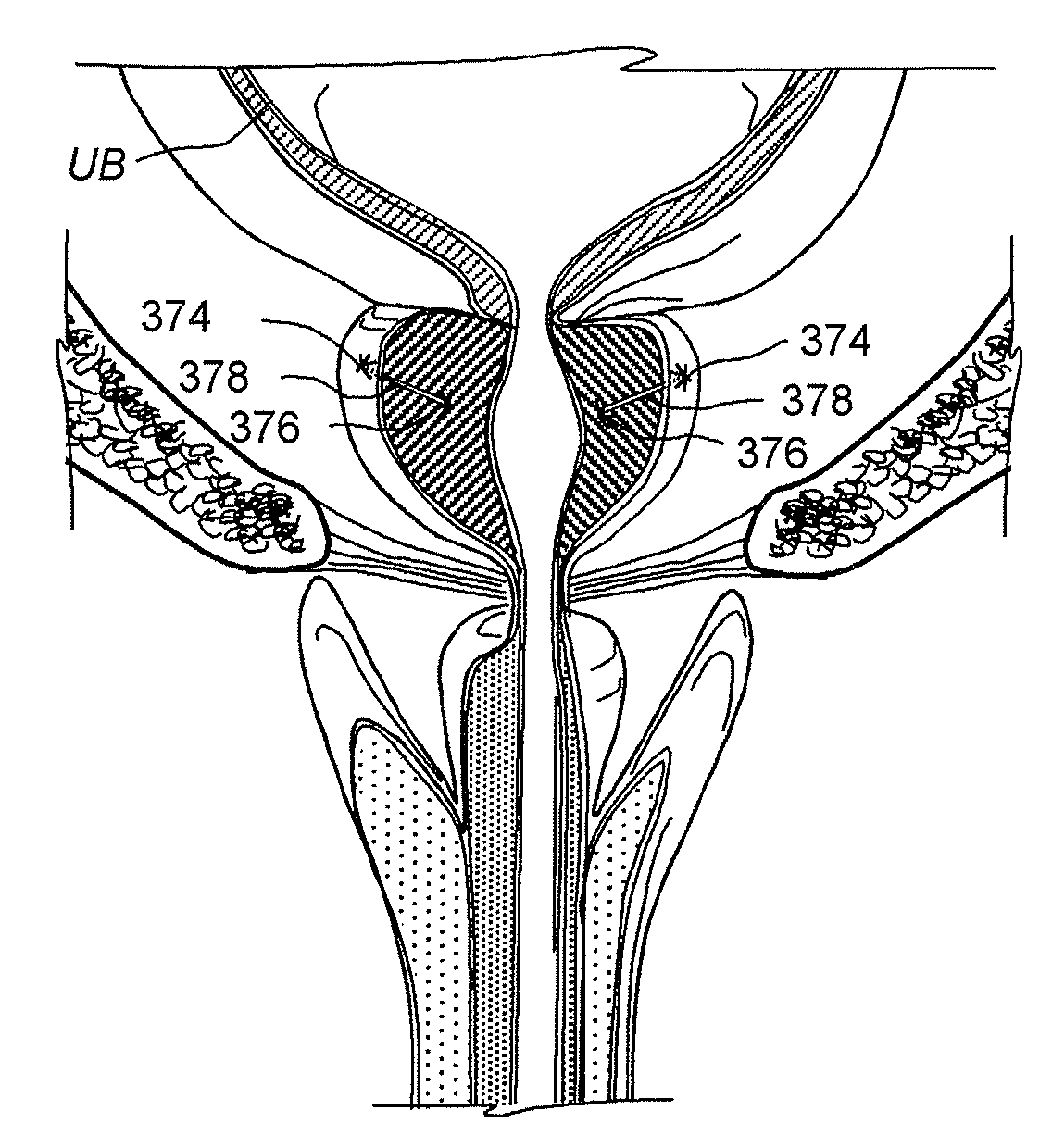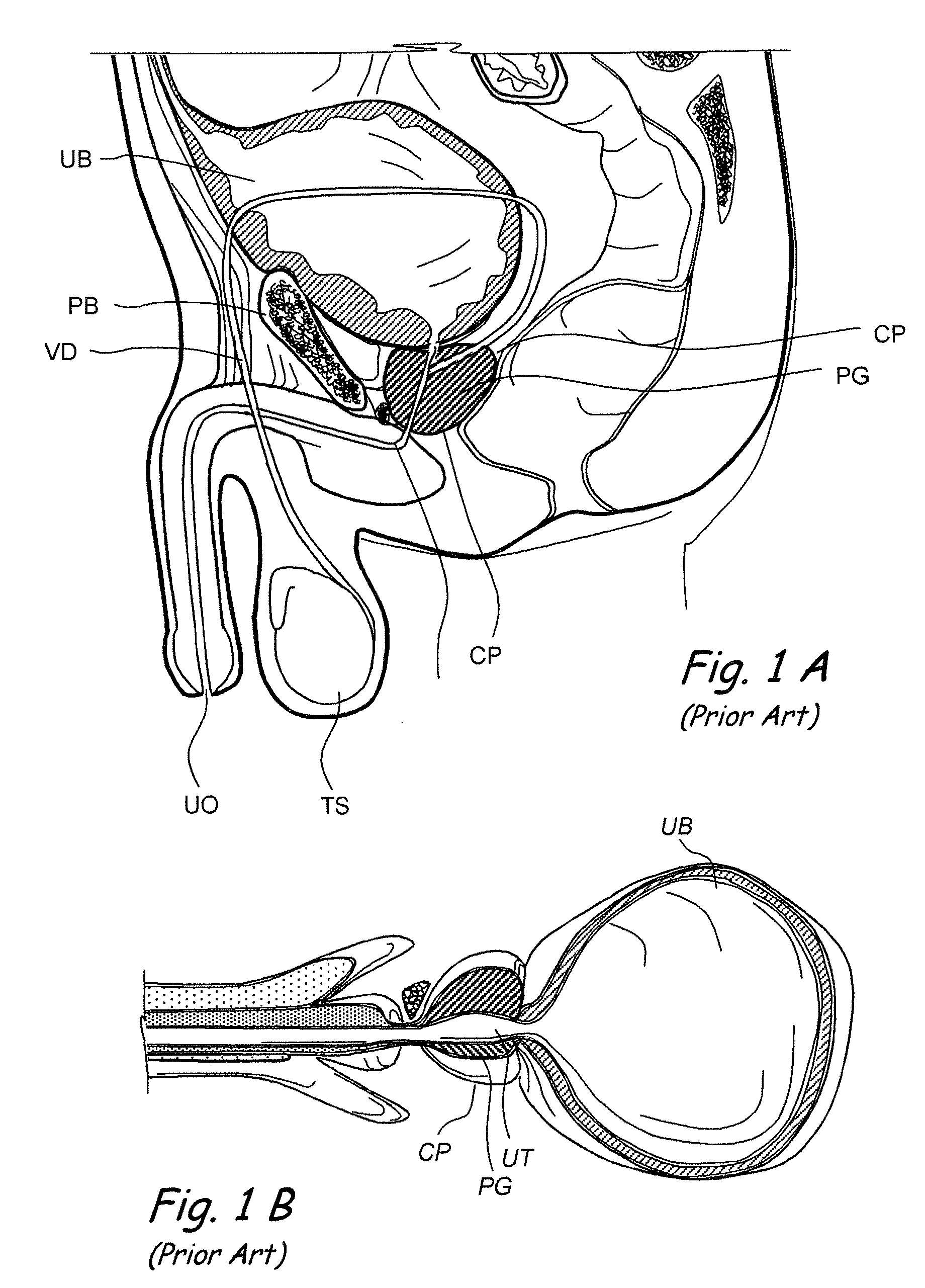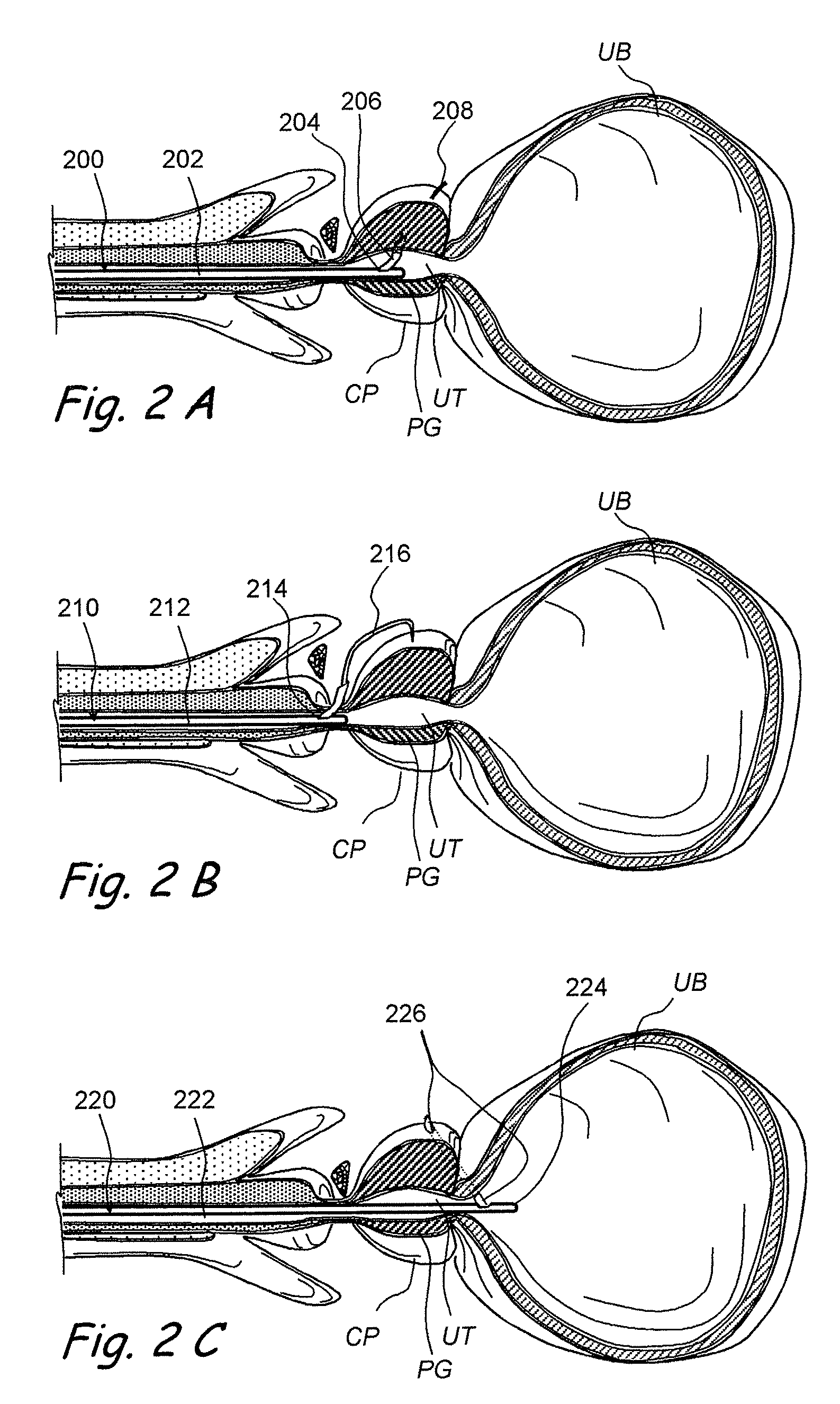Devices, systems and methods for treating benign prostatic hyperplasia and other conditions
a benign prostatic hyperplasia and other technology, applied in the field of medical devices and methods, can solve the problems of reducing the quality of life of patients, reducing the volume of the prostate gland, and reducing the severity of symptoms, so as to improve patency
- Summary
- Abstract
- Description
- Claims
- Application Information
AI Technical Summary
Benefits of technology
Problems solved by technology
Method used
Image
Examples
first embodiment
[0261]Excess lengths of tension elements or other severable regions of one or more devices disclosed in this patent application may be cut, severed or trimmed using one or more cutting devices. For example, FIGS. 26Q and 26R show a perspective view of a cutting device before and after cutting an elongate element. In FIG. 26Q, cutting device 2610′ comprises an outer sheath 2612′ comprising a sharp distal edge 2614′. Outer sheath 2612′ encloses an inner sheath 2616′. Inner diameter of outer sheath 2612′ is slightly larger than outer diameter of inner sheath 2616′ such that inner sheath 2616′ can slide easily through outer sheath 2612′. Inner sheath 2616′ comprises a lumen that terminates distally in an opening 2618′. An elongate severable device passes through the lumen and emerges out of opening 2618′. An example of an elongate severable device is a tension element 2620′. In the method of cutting or trimming tension element 2620′ the desired area of tension element 2620′ to be cut or...
second embodiment
[0262]FIG. 26S show a cross-sectional view of a cutting device for cutting an elongate element. Cutting device 2622′ comprises an outer sheath 2624′ comprising a lumen that opens in an opening 2626′ in outer sheath 2624′. Outer sheath 2624′ encloses an inner sheath 2628′ that comprises a lumen and a sharp distal edge 2630′. Inner diameter of outer sheath 2624′ is slightly larger than outer diameter of inner sheath 2628′ such that inner sheath 2628′ can slide easily through outer sheath 2624′. An elongate severable device passes through the lumen of inner sheath 2628′ and emerges out of distal end of inner sheath 2628′ and out of outer sheath 2624′ through opening 2626′. An example of an elongate severable device is a tension element 2632′. In the method of cutting or trimming tension element 2632′ the desired area of tension element 2632′ to be cut or severed is positioned near opening 2626′ by advancing or withdrawing cutting device 2622′ over tension element 2632′. Thereafter, inn...
third embodiment
[0263]In a cutting device for cutting an elongate element, the cutting device comprises an outer hollow sheath. Outer hollow sheath has a distal end plate comprising a window. An elongate severable device passes through the window. An example of an elongate severable device is a tension element. An inner shaft can slide and rotate within outer hollow sheath. Distal end of inner shaft comprises a blade that is usually located away from the window and adjacent to the distal end plate of the outer hollow sheath. In the method of cutting or trimming tension element the elongate severable device, the desired area of the elongate severable device to be cut or severed is positioned near the window. This is done by advancing or withdrawing the cutting device over the elongate severable device. Thereafter, the inner shaft is rotated within outer hollow sheath such that the blade cuts the elongate severable device between a sharp edge of the blade and an edge of the window. Inner shaft and ou...
PUM
 Login to View More
Login to View More Abstract
Description
Claims
Application Information
 Login to View More
Login to View More - R&D
- Intellectual Property
- Life Sciences
- Materials
- Tech Scout
- Unparalleled Data Quality
- Higher Quality Content
- 60% Fewer Hallucinations
Browse by: Latest US Patents, China's latest patents, Technical Efficacy Thesaurus, Application Domain, Technology Topic, Popular Technical Reports.
© 2025 PatSnap. All rights reserved.Legal|Privacy policy|Modern Slavery Act Transparency Statement|Sitemap|About US| Contact US: help@patsnap.com



